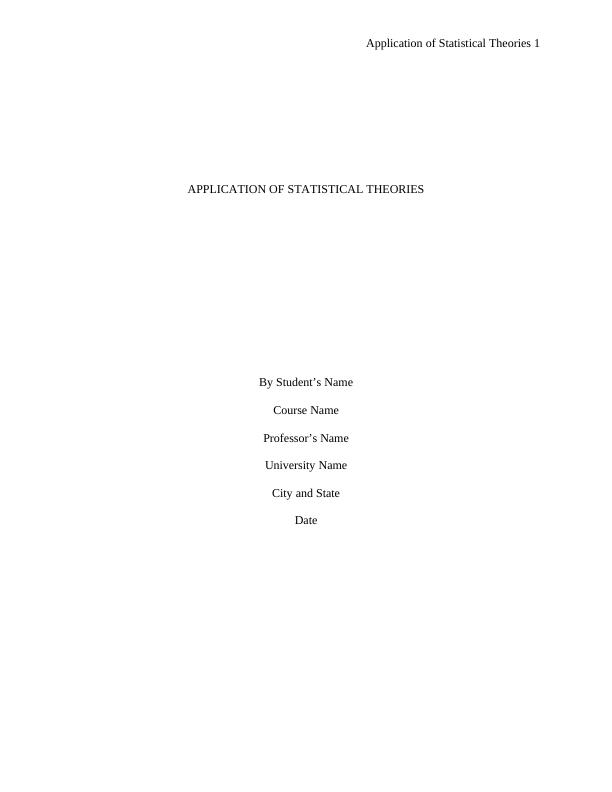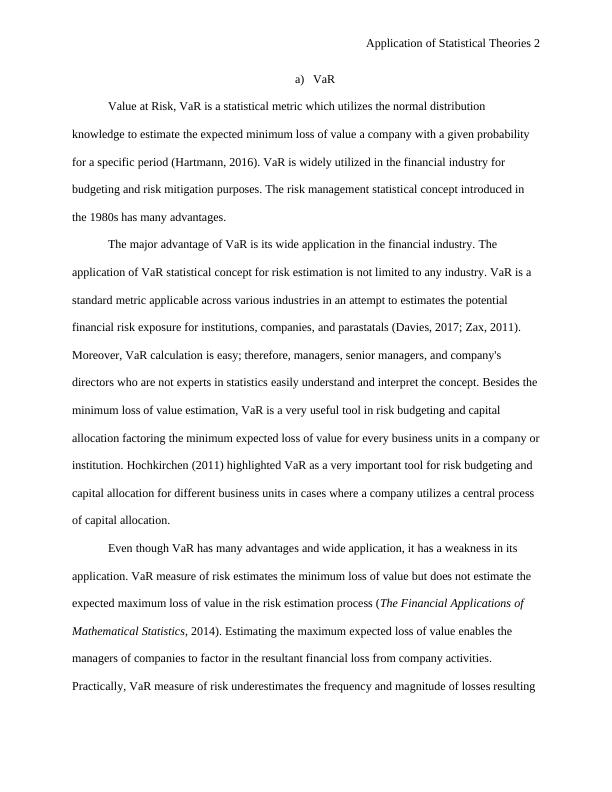Application of Statistical Theories Assessment 2022
Construct charts and calculate appropriate descriptive statistics to summarise a data set, solve a range of problems involving probability, compute and interpret the results of hypothesis testing, compute and interpret a variety of parametric and non-parametric methods of inference
11 Pages2049 Words17 Views
Added on 2022-10-11
Application of Statistical Theories Assessment 2022
Construct charts and calculate appropriate descriptive statistics to summarise a data set, solve a range of problems involving probability, compute and interpret the results of hypothesis testing, compute and interpret a variety of parametric and non-parametric methods of inference
Added on 2022-10-11
ShareRelated Documents
End of preview
Want to access all the pages? Upload your documents or become a member.
Sample Assignment on Hedging Strategies
|8
|1720
|69
Financial Portfolio Management Assignment
|4
|531
|198
The Financial Optimization Models
|5
|1018
|23
Analysis of 5 Companies' Portfolio
|9
|1240
|291
Research in Finance: Correlation among R&D spending, CEO ownership and Board independence
|14
|1738
|299
Risk Management Models PDF
|6
|940
|87




